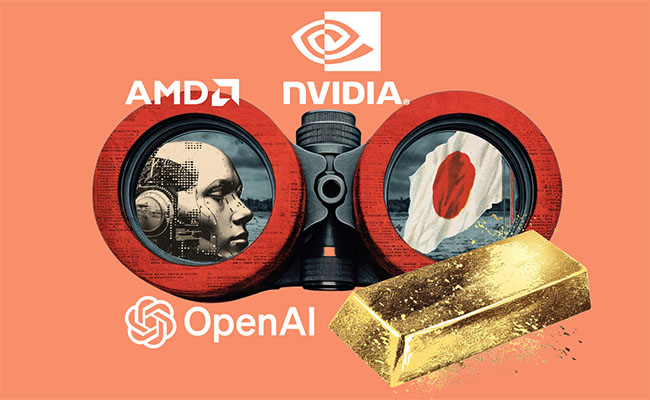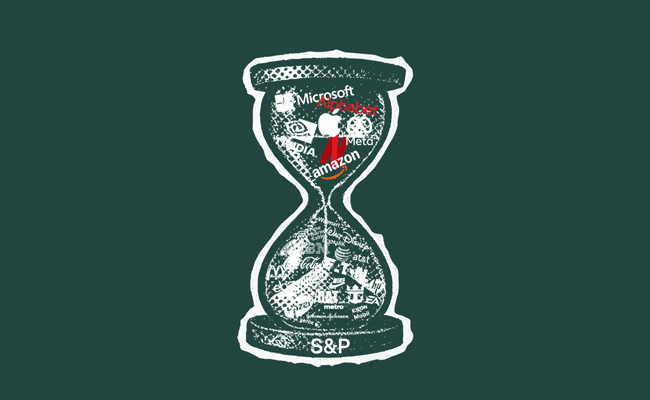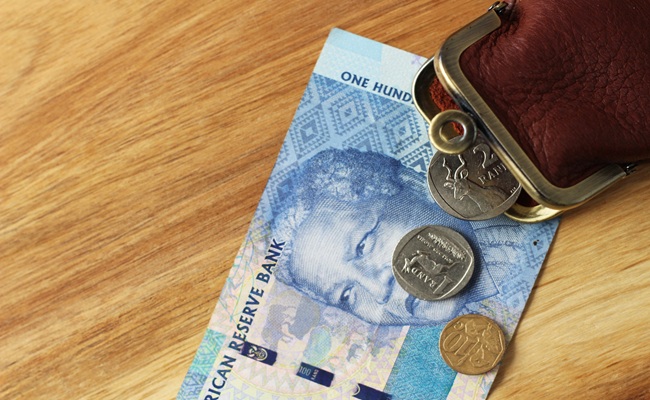There’s so much going on right now, we decided to draw up a few of the market themes forcing us to swivel our attention like skittish meerkats. Where to look?!
1. Gold
We really, really wish it had been Currency that came up with the term “gold-plated FOMO” but, alas, that honour goes to Luca Paolini at Pictet Asset Management, quoted in the Financial Times this week. “Gold has become so big that you cannot ignore it. There becomes a level when it becomes impossible not to own it,” he said.
And, indeed, yesterday the metal pierced $4,000 an ounce for the first time ever. This time last year, at $2,600, we were wringing our hands over missing the bus. Ha!
The buyers are central banks, and gold-backed exchange traded funds (ETFs), which have sucked in about $13.6bn in the past four weeks alone, taking net inflows into ETFs this year to about $60bn.
Some say the run is over; other technical analysts have $4,200 and even $4,700 in their sights. But be careful – gold plated or not, a FOMO trade can end badly. “And the thing about gold is that you get bored – there’s no yield on it. This is a frightening trade,” says Sasfin’s David Shapiro. (Still, Tim Cohen has more on why it really might be different this time, here.)
2. The AI merry-go-round
The numbers for gold are dwarfed, however, by the deals now taking place in the AI big leagues. For example, this week’s monster deal between OpenAI, owner of ChatGPT, and chipmaker AMD, in which the former has agreed to buy tens of billions of dollars of chips to boost its computing power. It takes to $1-trillion the “value” of deals OpenAI has signed this year for computing power.
In terms of AMD, it’s issued a warrant to OpenAI to buy up to 160-million shares at $0.01 over time (or about 10% of the company) on the basis that AMD achieves “certain share price targets” and OpenAI uses its chips.
It’s hot on the heels of AMD rival Nvida announcing it will invest $100bn in OpenAI, with both companies pledging to use up to 10GW of new data centre capacity. Talk about a close-knit situation!
But is this circular deal bonanza going to be good for anyone other than the firms in the inner sanctum? Asked about this, Protea Capital Management’s Jean Pierre Verster says it reminds him a little of the dot-com boom, where network equipment providers were financing the purchase of their products by their customers, which ended in tears.
“At the moment we don’t have vendor financing yet; we have potentially the biggest buyer of AI hardware, being OpenAI, not being financed to buy it from their suppliers (like AMD and Nvidia, Oracle and Microsoft) but through shareholding, so a certain circularity is arising in the flow of money between the expected large purchase and the suppliers,” says Verster.
“OpenAI is not being given money to help it to pay for buying chips, but it is effectively buying stakes in the expectation these deals are announced and those stakes will be worth a lot more and that creates wealth for OpenAI,” he explains.
The trick is that there’s no cash – yet. It’s all on paper. But the rubber will hit the road in a few years’ time when those purchases must be settled “because at that point in time OpenAI will not just require a strong balance sheet, they will need liquidity – cash – to pay for all these chips”.
The other factor to watch out for is whether OpenAI actually has the liquidity – thanks to revenues. The assumption being that it will make a lot more money by offering ChatGPT than at the moment.
“The only way they can increase their revenue substantially is either that the end consumer pays a lot more than what they are now, or the consumer will be subsidised by an intermediary like Microsoft or Oracle or TikTok, because those firms will benefit from the data and insights they get. That is the big question,” says Verster – not least because all these intermediaries are also competing with OpenAI at the same time!
3. Japan
Did the Japanese 30-year government bond yield just hit its highest level ever? Why, yes. At 3.32%, it very much did, while the 10-year government bond is still close to a 17-year high at 1.69%.
Why do we care?
Well, there are some very amusing (and rude, so we can’t repeat them in our family publication here) explainers on X, but basically the scenario is this:
Japan endured deflation for a long, long time. Since the 80s, in fact. In response, the central bank slashed interest rates to zero, basically, also for a long time. Now, lots of hedge funds would borrow yen at these super-low interest rates to buy other, higher-yielding assets (the carry trade). But now inflation has risen and bond yields are bounding up, making the carry trade a much more costly proposition. And then there’s a new prime minister to contend with, too.
So Japanese markets might unravel, badly.
Shapiro describes the Japanese debt trade as his personal uranium (a very long time ago the veteran trader lost all his bar mitzvah money on a dodgy uranium mine). “It’s an incredibly difficult corner of the bond market and it’s sucked in everyone. Warren Buffett went into Japanese trading companies – conglomerates like Mitsubishi – but he covered himself 100% borrowing yen. In other words, he hedged himself with the currency. If you want to go into Japan, cover yourself because the yen is so unpredictable,” he says.
4. Emerging markets
The MSCI emerging market index has had a fabulous 2025 – up 28% year-to-date, partly thanks to the dollar having a horrible year. It’s about time too, because emerging markets have been in the soup for a long time, languishing while developed markets – like the US – enjoyed an incredible 14-year bull run between 2010 and 2024.
We’ve written in Currency this week about the fantastic gains enjoyed in African frontier markets, which are now just cheap after being ridiculously cheap. The sheer value of stocks may mean the emerging-market trade can continue for longer.
5. Cocoa prices
And finally, can we get a hallelujah? Cocoa prices have retreated to a 20-month low of $6,150 a tonne – about half the $12,000 a tonne the bean of happiness was fetching in December.
Dry weather and disease in key growing areas like West Africa sent prices to “absolutely ridiculous highs” according to one analyst, no doubt helped along by more than a few speculators.
But coughing up R100 for a bar of Lindt has done enough to curb demand, and rains have been decent in West Africa to date, with forecasters, according to the Financial Times, now expecting the 2025/26 harvest to produce “a surplus of supply over global demand”.
The bad news is that coffee prices are still close to five-year highs. Only one vice for us, then.
This story was produced in partnership with Stanlib.
Top image: Rawpixel/Currency collage.
Sign up to Currency’s weekly newsletters to receive your own bulletin of weekday news and weekend treats. Register here.













What a fun read to catch up on market events; great journalism.
Ah cheers Rolf! Much appreciated